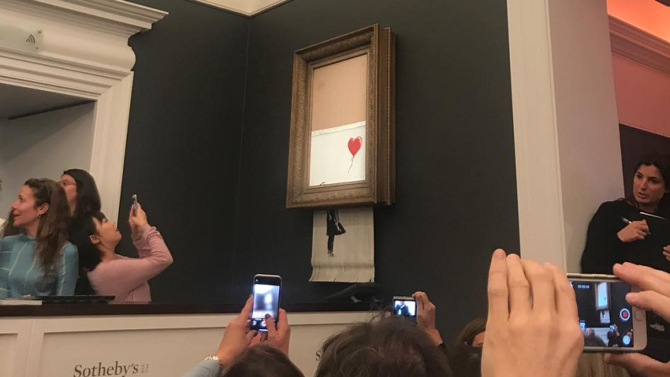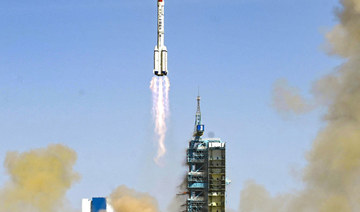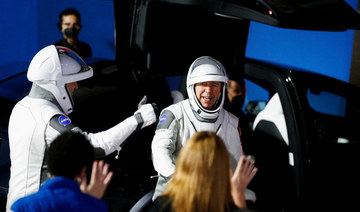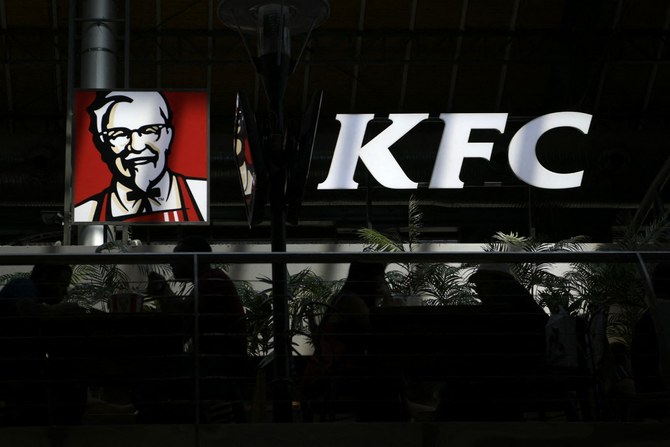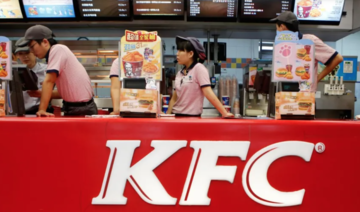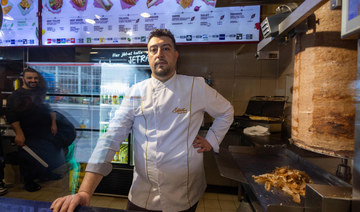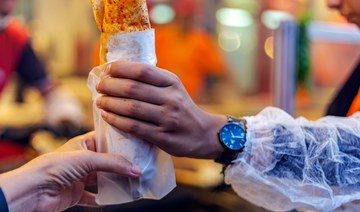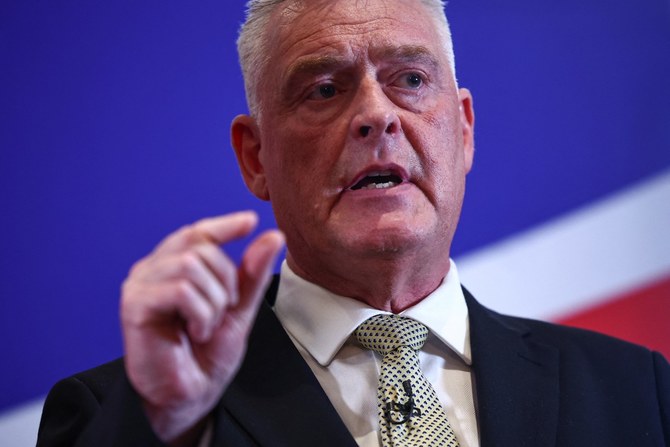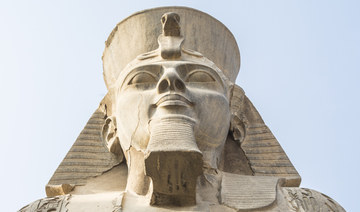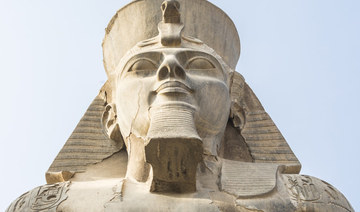LONDON: Art prankster Banksy has struck again.
The British street artist has stunned the art world with arguably his most audacious prank yet, self-destructing one of his best-known works moments after it fetched more than a million pounds at auction in London.
“Girl with Balloon” had just sold at Sotheby’s Friday for £1,042,000 ($1.4 million, 1.2 million euros) — a joint record for the maverick artist — when an alarm sounded and it unexpectedly passed through a shredder hidden in the frame, emerging from the bottom in strips.
“It appears we just got Banksy-ed,” said Alex Branczik, Sotheby’s head of contemporary art for Europe, in a press release accompanied by a photo of the bizarre episode.
“The unexpected incident became instant art world folklore and certainly marks the first time in auction history that a work of art automatically shredded itself after coming under the hammer,” the auctioneers added in the statement.
Banksy posted his own photo from midway through the shredding on his Instagram page early Saturday, showing onlookers aghast at the stunt.
The caption written below, imitating an auctioneer, read: “going, going, gone.”
The post, and reports of a man dressed in black sunglasses and a hat scuffling with security guards near the entrance to Sotheby’s shortly after the incident, led to speculation the artist was present to trigger it.
Sotheby’s, which could not be immediately reached for further comment on Saturday, did not disclose if it had prior knowledge of the stunt.
Branczik said he was “not in on the ruse,” according to The Art Newspaper.
“We are busy figuring out what this means in an auction context,” he reportedly added.
“The shredding is now part of the integral art work.”
Sotheby’s did not release details on the buyer, but reports said the winning bid was made by telephone.
“We have talked with the successful purchaser who was surprised by the story,” the auctioneers said in a statement to The Financial Times.
“We are in discussion about next steps.”
Banksy, who has never disclosed his full identity, began his career spray-painting buildings in Bristol, England, and has become one of the world’s best-known artists. He rose to fame painting clandestine street murals, typically simple graffiti stencils with a sharp political point, all over the world.
His mischievous and often satirical images include two policemen kissing, armed riot police with yellow smiley faces and a chimpanzee with a sign bearing the words “Laugh now, but one day I’ll be in charge.”
He also has a penchant for elaborate pranks.
In 2005, he hung an image of a spear-toting ancient human pushing a shopping cart in the British Museum, where it remained for several days before being discovered. The next year he smuggled a life-sized figure of a Guantanamo Bay detainee into Disneyland, and in 2015 he erected a full-scale dystopian theme park — “Dismaland” — by the British seaside.
The artist has also produced a treasure trove of other kinds of images, and his head-turning work have repeatedly sold for hundreds of thousands of pounds, including to a raft of famous people.
His “Happy Choppers” from 2006 fetched $735,000 also on Friday at a New York auction of personal effects owned by the late actor Robin Williams and his wife.
The price paid in London Friday evening for “Girl with Balloon” matched the artist’s previous record at a 2008 auction for another work, Sotheby’s said.
Prior to its shredding, the faux-gilt framed piece — spray paint and acrylic on canvas mounted on board — depicted a girl reaching out toward a bright red, heart-shaped balloon. It was originally stenciled on a wall in east London and has been endlessly reproduced, becoming one of Banksy’s best-known images.

It was instantly recognizable as a Banksy to anyone familiar with his work.
Banksy is not the first artist to deconstruct his own work. In the years after World War II, German-born artist Gustav Metzger pioneered “auto-destructive art,” creating paintings using acid that ate away the fabric beneath.
Mehdi Ben Cheikh, a Parisian street art specialist, said the stunt was “in the same vein as his performance in New York, which questions and criticizes the limits of the art market.”
Banksy in 2013 set up a stand near the city’s Central Park and sold 20 signed canvases of his own work for $60 each.


